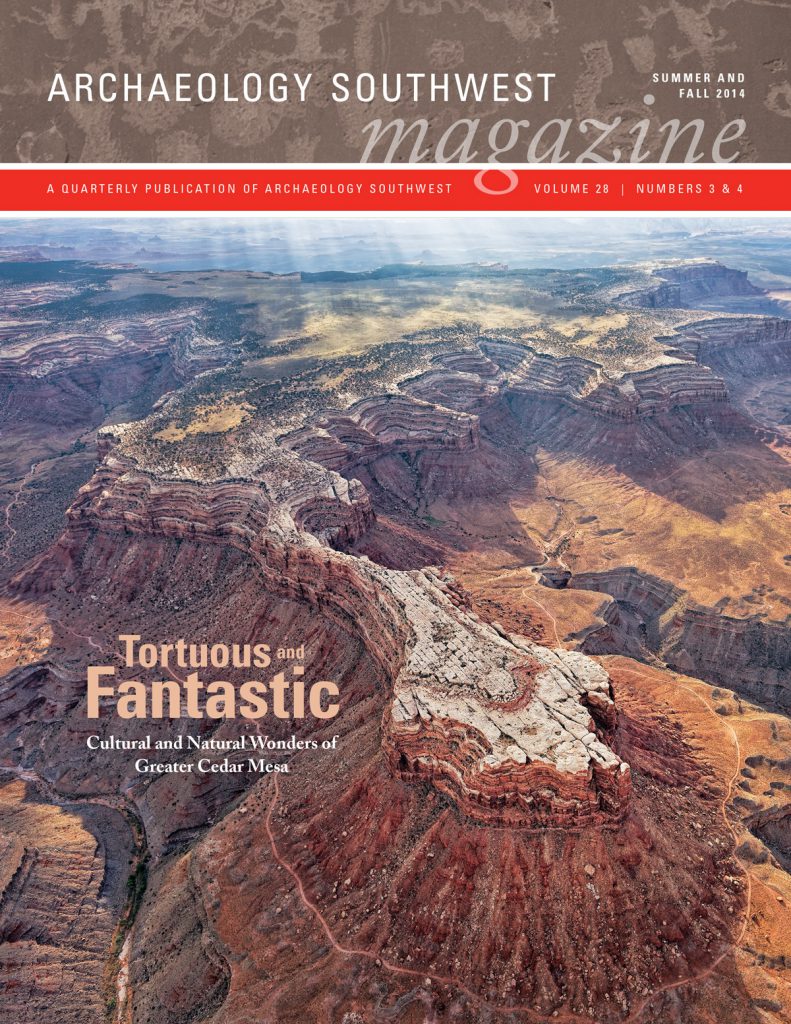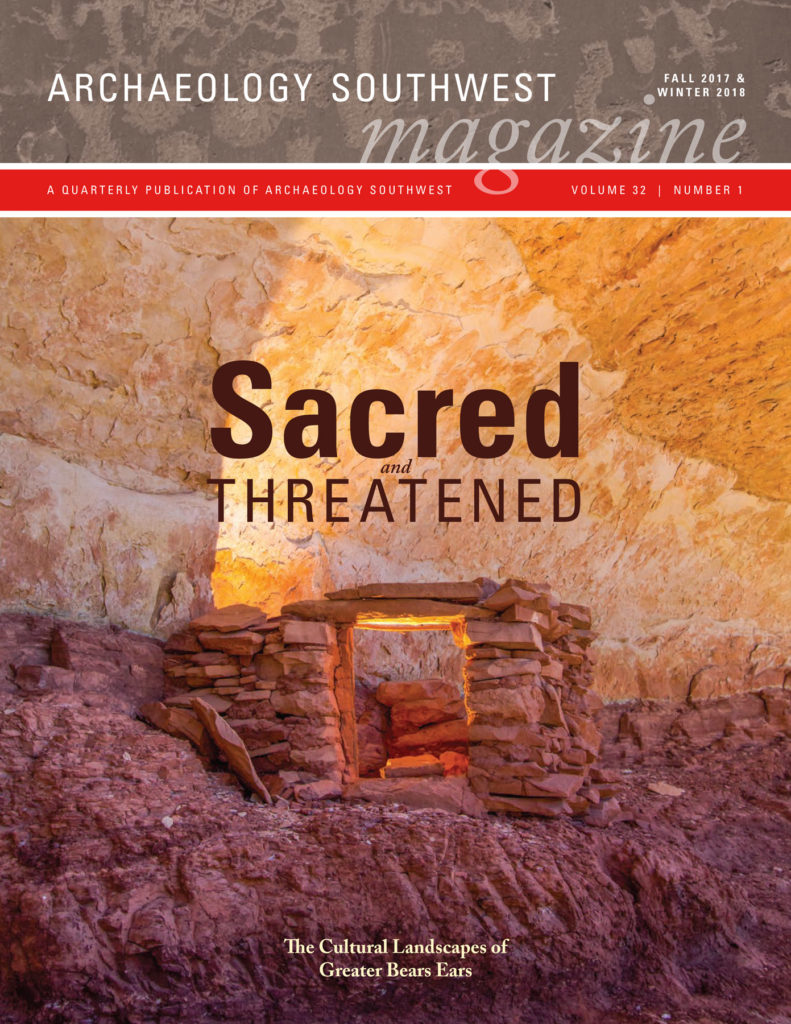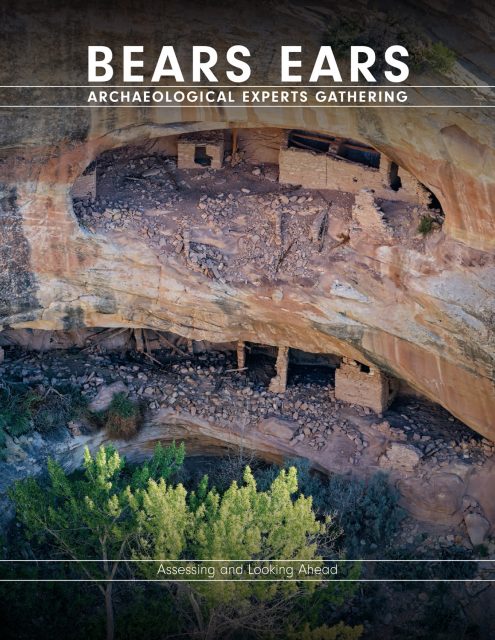- Home
- >
- Preservation Archaeology Blog
- >
- Archaeology Southwest in DC
Banner image: Carol M. Highsmith, via Wikimedia Commons
(April 6, 2018)—The Society for American Archaeology (SAA) will host its 83rd annual meeting in Washington, DC, next week, April 11–15. This foremost professional conference is massive, densely packed with concurrent symposia, presentation sessions, committee meetings, and social gatherings. I have not attended since Seattle 1997, back when most presenters were still using slide carousels and projectors, and I expect to be—once again—overwhelmed by the volume of it all. (Seriously: the final program is 323 pages long.)
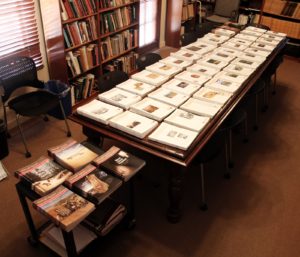
Nevertheless, I’m looking forward to it. As content editor of Archaeology Southwest Magazine, I’ll be scoping out sessions and presentations that might be adapted as magazine issues, and I’ll be meeting with slated and prospective guest editors. I hope to get people’s thoughts on our new proposed series, “How Do We Know What We Know?”, which will take a class of materials, such as pottery, and explore how Southwestern archaeologists and specialists have used that material over the last century to build inferences about people’s lives in the past. That would be one issue per year, in addition to our “Cities Underground” series, so that leaves plenty of issues to fill with Southwestern archaeology being reported at next week’s meetings.
I’m also pleased and proud to be supporting my colleagues in their presentations. I asked them to share what they’ll be presenting at the meetings with you:
Leslie Aragon: “I have two posters in a Thursday afternoon session (April 12) that Karen and Jeff organized: Identity and Ideology in the Hohokam Ballcourt World and Regional Influences on Cliff Phase Ground Stone in the Upper Gila. The lead author on the latter is Jonathan Schaefer, one of our field school students from 2017. On Saturday afternoon (April 14), I’m one of several authors on a paper that I won’t be presenting, Plain Ware and Polychrome: Quantifying Perceptual Differences in Ceramic Classification. The other authors are Jan Athenstädt, Lewis Borck, Corinne L. Hofman, and Ulrik Brandes. Finally, I’m the chair of the Student Affairs Committee, and we’re sponsoring a forum on Friday morning (April 13), So You Want to Work? A Discussion on Non-Academic Careers in Archaeology.”
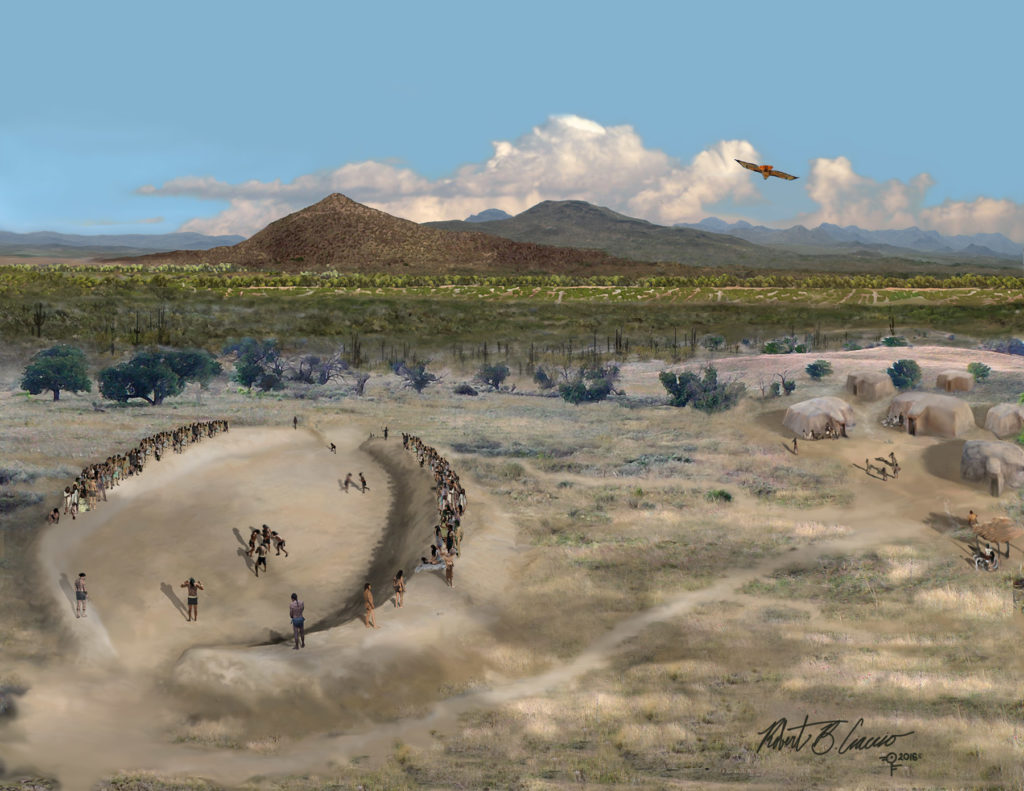
Jeff Clark: “I’m actually not going this year. Too many writing deadlines on my plate, and I’m taking care of our rabbits. I’m a secondary author on a couple of papers and one student poster, though. One of the papers will be presented at Katherine Dungan’s Saturday afternoon (April 14) symposium, Pottery in Practice: The Production and Use of Ceramics in the Ancient Southwest. The paper is with Katherine, Matt Peeples, and Caitlin Wichlacz, Secret Identities and X-Ray Vision: Applying CT-Scanning to Roosevelt Red Ware Formation Techniques in the Tonto Basin.” (Our colleagues Katherine and Matt used to be on staff here at Archaeology Southwest. Matt is now a professor at ASU, and Katherine is a postdoc on his team.)
Paul Reed: “I have a lot of meetings in the pre-meeting part of the week, and then an action-packed Thursday (April 12). In the morning, I have a poster presentation, Making the Most of Salmon Pueblo’s Enormous Dataset: The SPARC Project, by me and Carrie Heitman. That evening, I have two papers: The Salmon Pueblo Archaeological Research Collection (SPARC) Project, by Worthy Martin, Carrie Heitman, and me; and An Archaeology of Ash? Exploring Chacoan Contexts and Practice, also with Carrie Heitman.”
Karen Schollmeyer: “A bunch of us are in poster session Jeff and I organized called Strong Currents in Gila Basin Research, on Thursday afternoon (April 12). Leslie and Aaron probably mentioned their posters in that session. Mine is Strange Birds: Avian Remains in the Upper Gila and Mimbres Drainages
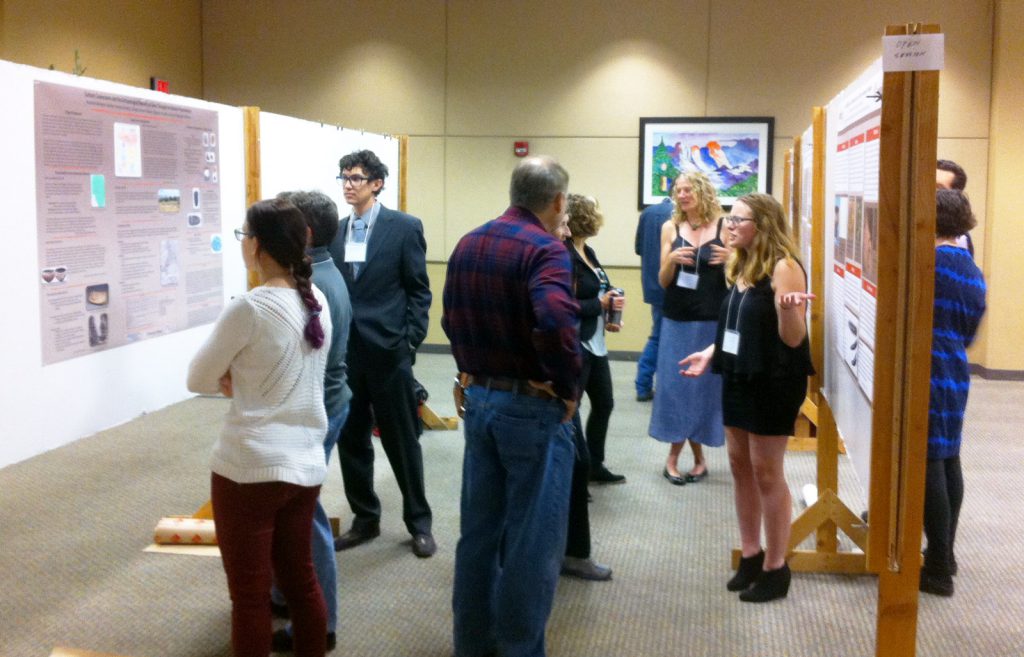
“For the past several years, we have helped our field school alumni get professional conference experience by presenting their research as posters. This year’s participants include:
Sophia Draznin-Nagy and Jeffery Clark, Pigment and Clay Variation in Polychrome Ceramics
Jonathan Schaefer and Leslie Aragon, Regional Influences on Cliff Phase Ground Stone in the Upper Gila Area
Susannah Johnson and Karen Schollmeyer, “Gaming Pieces in the US Southwest”
Taylor Picard and Evan Giomi, Analysis of Settlement Patterns near the Big Burro Mountains
Stephen Uzzle and Karen Schollmeyer, Insights into the Salado Phenomenon from the Gila River Farm Site
Ashley Huntley, John-Paul McCool, Nicholas P. Dunning, Samantha G. Fladd, and Vernon L. Scarborough, Reassessing Agricultural Potential in Chaco Canyon: Exploring the Link Between Soil Salinity and Soil Texture.”
John Welch: “I will be in a symposium on Saturday afternoon (April 14), Now That I Have My Degree, What Do I Do? Going from the Classroom to the Profession.”
Aaron Wright: “I’m presenting in a Thursday afternoon session (April 12) that Karen and Jeff organized. My poster is Hohokam Dry Farming along the South Mountains Bajada, South-Central Arizona, with coauthors John G. Jones, Todd W. Bostwick, and Arleyn W. Simon.”
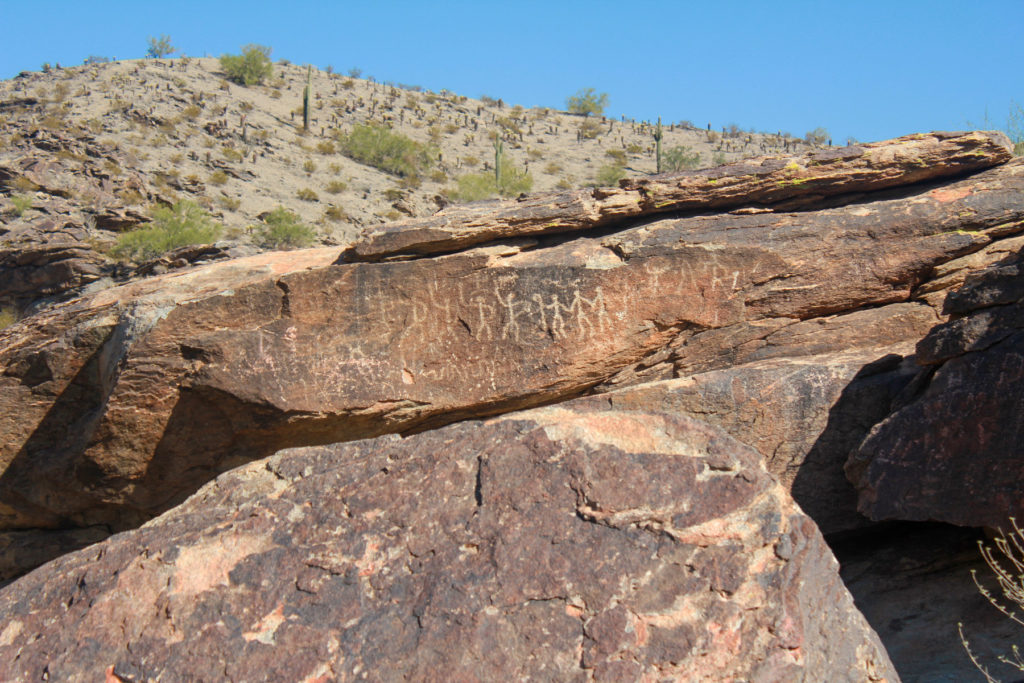
As usual, we plan to share the poster presentations on our website after the meetings—we’ll let you know when those have been posted.
Also on Thursday afternoon (April 12), Archaeology Southwest volunteer-extraordinaire Jaye Smith will be presenting The Raymond F. Robinson Collection: A Successful Collaboration to Save Safford Basin Archaeological Artifacts. Jaye’s coauthors include Linda Pierce, Kelley Hays-Gilpin, and Christian Downum. Linda has promised a blog post on that project, which involves the donation of a private collection and labors of love on the part of UNLV, Northern Arizona University, Arizona State Museum, and Archaeology Southwest.
I’m pretty sure our executive director Bill Doelle hardly ever gets to sit down during these meetings, and this year doesn’t seem like it will be an exception—except for the two panel discussions he has organized. Surely he’ll have to sit down for parts of those?
The topic of these mirrored sessions will come as no surprise: Bears Ears. The first, Bears Ears, the Antiquities Act, and the Status of Our National Monuments, an SAA President-Sponsored Session, takes place Thursday, April 12, from 3:00 p.m. to 5:00 p.m. The panelists are Carleton Bowekaty (Zuni Tribal Council and co-Chair of the Bears Ears Inter-Tribal Coalition), Willie Greyeyes (Utah Diné Bikéyah), Tommy Beaudreau (Latham & Watkins LLP and former Chief of Staff, U.S. Department of the Interior), Josh Ewing (executive director of the Friends of Cedar Mesa), Barbara Pahl (National Trust for Historic Preservation), Francis McManamon (an expert on the Antiquities Act), William Lipe (Washington State University, emeritus), R. E. Burrillo (SWCA), and Benjamin Bellorado (University of Arizona). Bill will be the moderator. (Archaeology Southwest Magazine readers will recall that Burrillo and Bellorado served as guest editors for our latest issue, “Sacred and Threatened: The Cultural Landscapes of Greater Bears Ears,” and Lipe served as guest editor for our 2014 issue, “Tortuous and Fantastic: Cultural and Natural Wonders of Greater Cedar Mesa.”)
|
|
|
|

The second panel, Bears Ears and the Future of Our National Monuments, will take place on Friday evening, April 13, at 6:30 p.m. at Johns Hopkins University, 1717 Massachusetts Avenue Northwest, LL7. This program, hosted by the Cultural Heritage Management Graduate Program at Johns Hopkins, is free and open to the public, but reservations are required and space is limited—click here to learn more. Importantly, this program will be livestreamed. Follow this link to sign up for that, or view the stream on their Facebook page. The panel will feature Bill, Bowekaty, Greyeyes, Beaudreau, and Ewing.
I need to sign off and help my colleagues with poster and PowerPoint proofreading (not to mention get my rarely worn business togs to the drycleaner) (and practice making-conversation-as-an-extreme-introvert). I’ll close by noting that you can follow along with us next week at the meetings on Twitter (@Arch_SW) and Facebook. Many attendees also live-tweet from sessions, and you should be able to view those by looking for #SAA2018.
